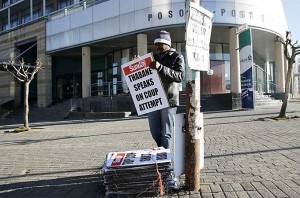While many of my previous posts have focused on Angola and its struggle to attain independence, I have decided, in this post, to focus on an aspect of Angola that Americans know little about…it’s culture. In learning about Angola’s culture, I was astonished to find that their culture is not only similar to America’s in a lot of ways, but it is also extremely artistic.
When I say that the culture is similar to America’s, I mean that the culture enjoys similar sports and activities that Americans do, such as football and basketball. Angola’s football association, the Federacao Angolana de Futebol, manages its National team called “Palancas Negras”, or the Sable Antelopes. And its National Basketball Association, or the Federacao Angolana de Basquetbol, manages its basketball team, simply “Angola”. Both teams have made International appearances. Angolans are also known to practice the sport of capoeria, a Brazilian martial art that uses acrobatics and dance to culminate an elegant, yet martial, fighting style. It is also commonly used as a source of entertainment during which individuals exercise their strength, speed, and leverage. Many people do not know that capoeria originated in Angola by African slaves held captive in Brazil. The art is now recognized by the United Nations as a symbol of Angola’s legacy, and has gained the “Cultural Heritage” status.
Angola also has an immense collection of art and poetry, mainly focusing on ethnic art. Interestingly, ethnic art has become more popular in Angolan culture only recently. Some of this art includes: wood carving, ceramics, mask making, clay making, etc. Not only has Angolan art been regarded as some of the finest art in Central Africa (esp. the masks and statues of the Chokwe people), but their masks are used to remake ceremonial Angolan celebrations and festivals. Some of these celebrations include: Christian holidays (though a vast majority of Angolan’s are Roman Catholics), Angolan Independence Day (November 11), ceremonies in remembrance of civil war, family celebrations (such as weddings, births, funerals, and coming-of-age parties), and even festivals for harvest and hunting seasons.
Additionally, Angola has a strong tradition of oral-storytelling and poetry. The reason for this was that many Angolans associate poetry as being a catalyst for Revolution during the country’s fight for independence. During that time, poetry and literature became highly political to support Angolans’ views under Portuguese rule. One of the most famous Angolan poets was Antonia Agostinho Neto, also the former president of Angola from 1975 to 1979.
Currently, one of the most famous places to buy authentic Angolan ethnic art is in the Futungu market near Luanda. Visitors can also gain an experience of the Angolan culture through live music. Musicians dress in traditional clothing and play the marimba, kissange, and ngoma drums.
I am glad to have summed up the semester with this post, as I have been able to gain a more personal perspective of Angola. I’ve realized that their culture shares a lot of the same values and customs as mine does. Furthermore, they enjoy a lot of the same leisures as my country does, and have a similar style. I would encourage anyone to visit Youtube and watch Angolan ethnic dances. It’s so amazing to see how alike our cultures dance and dress!






